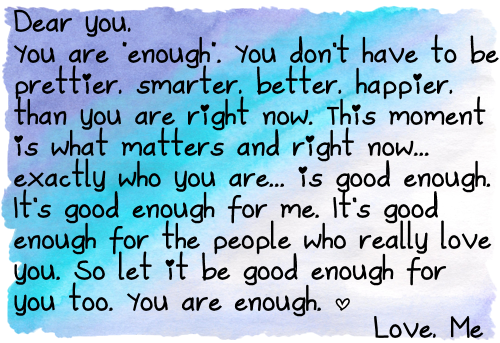I for one make an effort to go annually and promptly. I have come to realize that time is precious and life is too short! It is not necessarily something that I look forward to but I’ve chosen my specialist with careful scrutiny while I never forget that the responsibility lies solely on me because after all, it’s my body.
Dr Bothner, is my FEMALE gynecologist and she practices in Parklane Hospital. She’s German born and still has the accent to match after all these years of being in sunny South Africa. Ease and confidence make her my number one gynecologist, and yes, I have had a few, some just plain ol’ creepy. And I’m sure I’ll see her until my nether regions malfunction or what ever they do when you get that close to the grave.
Last week was my second check-up since Samuel’s birth and all went well. What actually got me thinking about doing this post was the reaction of one of my friends, she was surprised at how good I was at keeping these appointments but what she didn’t know was that I have a family history of breast and ovarian cancer and that I have no choice but to be on high alert because there are some scary statistics out there!
My maternal grandmother was diagnosed with breast cancer about six years ago and she had to have a partial mastectomy – in other words they had to take out parts of her breast tissue and some lymph nodes in her armpit because it had spread so far into her system. We were all really sad at the prospect of losing her but thank God, she’s a survivor who makes the trip every six months to stay in the clear. Just three months ago, on a ROUTINE check-up, they discovered another lump which caused much concern yet it was benign.
Breast cancer is the most common cancer in women worldwide. It is also the principle cause of death from cancer among women globally. Despite the high incidence rates, in Western countries, 89% of women diagnosed with breast cancer are still alive 5 years after their diagnosis, which is due to detection and treatment (Parkin, 2008). The map below which countries are impacted by breast cancer (pink being the highest per capita):
A pink ribbon is the most prominent symbol of breast cancer awareness. Pink ribbons, which can be made inexpensively, are sometimes sold as fundraisers, much like poppies on Remembrance Day. They are worn to honor those who have been diagnosed with breast cancer. The pink ribbon is associated with individual generosity, faith in scientific progress, and a “can-do” attitude.
My female cousin, Larissa Jones, however was not so fortunate. She was fourteen years old when she died, it was excruciatingly heart-breaking to watch someone slip away from a full life ahead of them. Diagnosis came far to late, already at stage three of four, hope seemed dim.
Ovarian cancer is the eighth most common cancer among women (after skin cancer) and the fifth leading cause of cancer deaths in women in the United States. The American Cancer Society estimates that about 20,000 new cases of ovarian cancer will be diagnosed this year, and approximately 15,000 women will die from ovarian cancer this year. Ovarian cancer is often called the silent killer because its symptoms can be subtle, leading to a delayed diagnosis and poorer outcome. However, if ovarian cancer is detected early, approximately nine out of ten women will live for at least five years with the disease. While the majority of women who develop ovarian cancer have no known risk factors for the disease, researchers have identified a few factors that increase a woman’s risk of developing ovarian cancer. These factors include advancing age, family history and genetics, early onset of menstruation (before age 12) or late menopause (after age 50), having a first child after age 30 or never having children, or having breast cancer. A personal/family history of breast cancer: Women who have been diagnosed with breast cancer have an increased risk of developing ovarian cancer because many of the risk factors for breast cancer (including early menstruation, late menopause, delayed childbirth, BRCA gene mutations, etc.) also put women at risk for ovarian cancer.
There is no sure-fire method of preventing ovarian cancer. There is also no foolproof screening test to detect ovarian cancer. The best method of defense against ovarian cancer is a yearly pelvic exam beginning at age 18. Physicians perform pelvic exams to check for abnormalities in the size or shape of the uterus, vagina, ovaries, Fallopian tubes, bladder, and rectum. Many women mistakenly believe that the Pap smear exam screens for ovarian cancer; however, the Pap smear is a screening exam for cervical cancer. The Pap smear may occasionally detect ovarian cancer but usually only after it has progressed to advanced stages.Genetic testing is available to decide whether women carry mutations of the BRCA1 (breast cancer gene 1) or BRCA2 (breast cancer gene 2) genes. Mutations of these genes put women at higher risk of developing both ovarian cancer and breast cancer. The decision to undergo genetic testing is a personal one and should be made carefully with input from physicians and family members. Many women also undergo genetic counseling before the test.
So while in your mind, putting off your annual check-up for another day might not phase you, I urge you and plead with you to take it seriously. It IS better to know and deal with it than find out when it’s too late. It’s a few minutes of your time, ONCE a year that could add many more years to your life to spend with those you love and cherish. Let’s not have any regrets about it and educate ourselves. We have one body and one life to live – let’s do it wisely.




